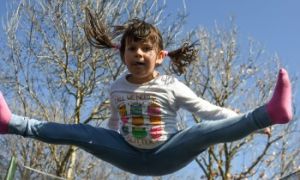

Quality Area 3 of the National Quality Standard (NQS) focuses on the physical environment—its design, safety, inclusivity, and how it supports children’s learning, wellbeing, and agency. Here’s a breakdown of practical, workplace-ready examples tailored to your advocacy and leadership lens.
The following is a concise yet powerful cheat sheet for Quality Area 1: Educational Program and Practice, tailored for your advocacy and sector leadership lens. This distills the core elements, documentation strategies, and reflective prompts to support both compliance and authentic pedagogy.
Safe language in documentation is more than just avoiding sensitive disclosures—it’s about writing in a way that protects children’s dignity, fosters trust with families, and upholds the professional integrity of educators. Here’s a guide to help you embed safe, respectful, and pedagogically sound language into your group and individual observations.
Writing a group observation in early childhood education is both an art and a strategic tool—it captures collective learning while honoring individual voices. Here's a guide to help you craft meaningful, pedagogically sound group observations that align with the planning cycle and resonate with families and educators alike.
A: In early childhood education, group goals serve as a powerful tool to foster shared learning experiences, strengthen peer relationships, and guide intentional teaching. Whether you're supporting social-emotional development, embedding EYLF outcomes, or responding to emerging interests, integrating group goals into your program helps create a cohesive, responsive learning environment.
This guide explores practical strategies for embedding group goals into your curriculum planning, linking them to outcomes, and evaluating their impact—ensuring your documentation reflects both educator intent and children's evolving capabilities.
The Connection Schema is a cognitive play pattern where children explore how things join, fasten, and separate.
Here’s a comprehensive guide on How to Approach School Readiness Planning for Preschoolers, grounded in evidence from ACECQA, the National Quality Standard (NQS), and the Early Years Learning Framework (EYLF V2.0).
In homes and centres across the country, early childhood educators once viewed documentation as a treasure map—capturing the magical moments of play, thought, and connection that helped children grow. But today, many feel they are no longer tracing children’s journeys. They’re just ticking boxes.
In our push to capture every moment under the EYLF, many educators find themselves swamped by paperwork rather than immersed in play. Observation records, plans, reflections, assessments—they grow faster than we can connect with each child. When every anecdote demands multiple frameworks and sign-offs, learning narratives can lose their heart. In today’s landscape, dominated by the Early Years Learning Framework (EYLF), that balance has unraveled. The EYLF was meant to unify and elevate practice. Instead, we’ve watched it morph into an overwhelming checklist culture—where paperwork eclipses presence, and compliance overshadows connection. Somewhere along the way, a valuable framework was repurposed into a bureaucratic beast. So, educators, are we documenting learning or drowning in it?
This guide distills the heart of the Early Years Learning Framework into clear, actionable reference points for educators. Grounded in evidence and everyday practice, it highlights the guiding principles and intentional actions that support every child’s learning, well-being, and sense of belonging. Whether used in planning, reflection, or team training, these prompts and insights help ensure that pedagogy is not just compliant but deeply connected, culturally responsive, and emotionally attuned.
 Here is the list of the EYLF Learning Outcomes that you can use as a guide or reference for your documentation and planning. The EYLF… Read More
Here is the list of the EYLF Learning Outcomes that you can use as a guide or reference for your documentation and planning. The EYLF… Read More
 The EYLF is a guide which consists of Principles, Practices and 5 main Learning Outcomes along with each of their sub outcomes, based on identity,… Read More
The EYLF is a guide which consists of Principles, Practices and 5 main Learning Outcomes along with each of their sub outcomes, based on identity,… Read More
 This is a guide on How to Write a Learning Story. It provides information on What Is A Learning Story, Writing A Learning Story, Sample… Read More
This is a guide on How to Write a Learning Story. It provides information on What Is A Learning Story, Writing A Learning Story, Sample… Read More
 One of the most important types of documentation methods that educators needs to be familiar with are “observations”. Observations are crucial for all early childhood… Read More
One of the most important types of documentation methods that educators needs to be familiar with are “observations”. Observations are crucial for all early childhood… Read More
 To support children achieve learning outcomes from the EYLF Framework, the following list gives educators examples of how to promote children's learning in each individual… Read More
To support children achieve learning outcomes from the EYLF Framework, the following list gives educators examples of how to promote children's learning in each individual… Read More
 Reflective practice is learning from everyday situations and issues and concerns that arise which form part of our daily routine while working in an early… Read More
Reflective practice is learning from everyday situations and issues and concerns that arise which form part of our daily routine while working in an early… Read More
 Within Australia, Programming and Planning is reflected and supported by the Early Years Learning Framework. Educators within early childhood settings, use the EYLF to guide… Read More
Within Australia, Programming and Planning is reflected and supported by the Early Years Learning Framework. Educators within early childhood settings, use the EYLF to guide… Read More
 When observing children, it's important that we use a range of different observation methods from running records, learning stories to photographs and work samples. Using… Read More
When observing children, it's important that we use a range of different observation methods from running records, learning stories to photographs and work samples. Using… Read More
 This is a guide for educators on what to observe under each sub learning outcome from the EYLF Framework, when a child is engaged in… Read More
This is a guide for educators on what to observe under each sub learning outcome from the EYLF Framework, when a child is engaged in… Read More
 The Early Years Learning Framework describes the curriculum as “all the interactions, experiences, activities, routines and events, planned and unplanned, that occur in an environment… Read More
The Early Years Learning Framework describes the curriculum as “all the interactions, experiences, activities, routines and events, planned and unplanned, that occur in an environment… Read More

Simple songs about consent gently introduce children to concepts like body autonomy, boundary-setting, and respectful...
See more...
The following lists the sub outcomes, examples of evidence when children can achieve each sub...
See more...
Emotional Intelligence is now widely accepted as a fundamental life skill which can be nurtured...
See more...© 2009-2025 Aussie Childcare Network Pty Ltd. All Rights Reserved.

